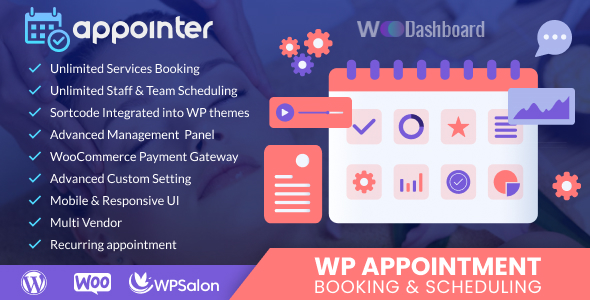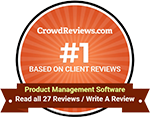I'm a Content Marketing Specialist at Netbase JSC. I’m very interested in learning about SEO and I always want to learn more and more to improve my knowledge. It’s my pleasure to share my knowledge to help you to improve your online business website. I have many methods to increase your sales revenue, improve your ranking website and help you run your business. Don't be hesitate to contact me.
Also, as an experienced e-Commerce researcher for many years, I know one thing: “Your success demands on business agility because the world of e-Commerce is rapidly changing and you have to prepare for any kind of change”
Besides, I'm a big fan of technology, I’ve been researching technology for 5 years, especially about WordPress, Magento and Virtual Mart. If you have any questions, you can message me anytime, anywhere and I’ll answer right away and bring the most useful and essential information to you.
Hopefully with my knowledge, I can help you resolve many issues about your business.
Have a nice day!
TABLE OF CONTENTS
Contact Us
Please fill out the Customization Request form if you need any customization

 5.0/5 ratings
5.0/5 ratings










Modern point of sale for restaurants is more likely than taking orders. Locations from fast food to fast-food restaurants to upscale dining restaurants now use their point of sale restaurant as the primary hub of activity for their business.
According to the report “Global Restaurant POS Software Market Market”, the Restaurant POS Software market revenue was 3483 Million USD in 2019 and will reach 5190 Million USD in 2025, with a CAGR of 6.87% during 2020-2025.
The potential for point of sale for restaurants to develop is enormous, however, there are also many difficulties that a beginner entering this industry must overcome even those who have had experience implementing before. The following tutorial from CMSMART will give you the most detailed information on point of sale for restaurants
1. What Is A Point Of Sale For Restaurants?
Point of sale systems for restaurants is changing the way restaurants operate, bringing data from the back of the house to the servers, cashiers ...
A point of sale for restaurants is a fancy name for a system that accepts debit or credit card payments. In other words, your POS is where customers pay for your services. It can be over the counter, at the table, or even online. Modern POS systems keep track of payments, receipts, inventory, customer and sales data, and can even help you manage your employees.
Also known as point of purchase, traditionally, cashier counters are located near the exit so that customers can pay when they go out. As restaurants, and more so the concept of dining, have changed, so has the concept of the point of sale, allowing for more freedom and flexibility in terms of where customers can pay - and where. restaurants can take their money.
In most restaurants today, the POS system is the central processing unit for a lot of business information. Every financial transaction is recorded at the point of sale, and your POS system can connect that information to your inventory, cross-reference it with menu items, and generate detailed financial reports. in any way, you can imagine.
But the modern point of sale systems for restaurants are capable of so much more than taking orders. Venues from food trucks to fast food joints to fine dining restaurants now use their restaurant POS as the main operations hub for their business.
2. Highlight Features Of Point Of Sale For Restaurants Systems Must Have
Management
Cloud-based point of sale for restaurants allows you to manage your inventory in real-time and know how much inventory you own over a given period of time. Once you receive your order, all you have to do is a scan or import your items and everything will be saved in the software. When you scan all of your items, it's much easier to know how many you have in stock for each article. This makes it easy to see how much money you should have and how much you actually own. It is possible that the assumed quantity is not the same as the actual quantity due to loss, theft, etc.
Managing your inventory is very easy with this type of functionality. The cloud-based POS system lets you know how much stock the owner has in their store today without having to do long and painful manual inventory checks on a regular basis. Easier to take an inventory count report and control it.
Tableside ordering
Any quality point of sale restaurant machine programmed for bars and restaurants must have built-in table management and reservation options.
If you are doing desk seating, you will obviously need this feature and it is essential to managing your front-home activities. You'll want to know the status of your tables at any given moment. For example, which table is currently occupied, is deleting, or is available. The program should also incorporate a reservation system that can quickly update your table status based on customer bookings. This integration creates a seamless experience for managing your desk and seating arrangement.
Quick tip, when demoing your software, ask the trainer about how your seat and seat reservation work and let them show you the feature details. Not all POS software comes with built-in reservations, so you may have to use 3rd party software like OpenTable to make your reservations.
Mobility & cloud
Mobility is one of the biggest benefits of cloud computing point of sale systems for restaurants
Mobility is one of the biggest benefits of cloud computing and one of the benefits that can be exploited by restaurants in particular. The ability to work remotely is a popular feature with managers who have to keep track of multiple locations simultaneously. You can do what you need - manage employees, inventory and prices and track sales figures or anything else - on your smartphone at home or on the go. as if you were in the office at the restaurant.
Staff
You can better plan your workforce when your POS system gives you information about employee performance. You can see when your employees count in and out, as well as their sales and personal tips on a digital POS system. This ensures that you are not only covered all the time but also have reliable coverage during peak hours and other times of urgency. It allows you to make HR decisions based on real results and makes it possible for you to set permissions for employees - payment overrides inventory adjustments, sales figures, and similar responsibilities - single.
Multi-store
With multi-store management features, the workload will be greatly reduced
Some POS systems allow you to manage several stores within the same software. In fact, most POS systems are created for single store owners or one store in one location, and therefore do not meet the specific needs of network stores such as franchising. commerce, group purchasing and corporate network. With a point of sale restaurant system that manages multiple stores, you can manage your data and optimize inventory for each store. With multi-store management, you can customize each type of store according to your needs and manage them from one central location.
With multi-store management features, the workload will be greatly reduced thanks to this function. The idea behind this function is to have a central account (Main or Headquarters) to control all other stores. If the mall makes changes to prices, products, etc., all other stores that are affiliated with the mall will have the same change as the mall store. This feature is a very useful tool for franchisees, buying groups, corporate chains and those looking to expand their network.
So instead of changing the prices of each store one by one, some stores may depend on a Master account that can push critical data changes across the network.
Reporting
A POS report is simply a collection of data collected by your point of sale for a restaurant system. Because modern POS systems can track sales, credit card transactions, or even employee hours, they can also generate a variety of weekly, daily, or monthly reports.
The biggest benefit to the POS reporting feature is the visibility of trends, such as the most popular items or the busiest times, that can help make important business decisions, for example. Like what inventory to buy, when to arrange more employees, or what time of the year leads to the most sales.
Customer Management
Customer management allows you to create and maintain customer profiles that contain valuable information such as customer purchases and contact information.
Why is it important? It would be beneficial to use this feature to track customer activity and buyer behavior in order to understand your customer's needs and preferences. Based on your details, you can identify loyal customers and offer them promotions and discounts for loyal customers. You can also send customers personalized offers and promotions to motivate them to buy more.
Details can also help your sales executive develop deeper customer relationships. This can actively promote customer loyalty and create ambassadors.
Training and support
To get the most out of your new point of sale restaurant, you need to ensure that you are properly trained on all the functions and features on the front and back of your home.
Not all systems will come with training, so be sure to ask if training is included. Some POS companies may have basic training videos online. Other companies may have a coach working with you remotely. Or your POS agent can provide on-site training. Whichever way you go, make sure your system has the full training you need to run smoothly.
You don't want to go to the “direct release” date and don't have all of your employees trained and keeping up with operational processes. That's why it's important to set up your POS for a few weeks or so if possible before going online, so you've completed all the issues and properly trained the build. relatives and their staff.
Quality of service and support can disrupt your business or at least determine how frustrated you are. When researching your POS, don't call the pre-sales number, call the support number first. Here are some points to the question. How quickly did they pick up the phone? Have you been held back immediately? When you call someone, are they friendly and helpful? Let the support person know you are researching their product and ask them what they like most about the product they support AND ask them what the biggest complaint they have received about their product.
Doing this simple task will help eliminate slow, weak, or rude providers of support first. And if the support person is helpful, they should, they will answer your questions and give you insight into the product you're thinking about spending money and hard time making. be your own. After you complete this task, verify that they have 24/7 support and confirm your software and hardware warranty terms and conditions.
Marketing tools
Having the resources and tools needed to help market and grow your business is just as important as collecting money from customers. You want features in your POS that will help you increase sales and keep customers coming back. Features like loyalty programs, gift cards, customer rewards, messaging tools, automatic promotions based on customer purchases, and special offers to increase traffic in slow time.
It might be surprising that not all of the top 10 must-have restaurant POS features hard-coded software features; These are requirements such as having a fast system, easy-to-use interface, quality service and support, appropriate training and marketing options. We hope you've enjoyed this top 10 list and we encourage you to share it with others if you found it helpful and helpful.
Speedy Interface & Quick Checkout
One of the most important POS features of a restaurant or bar is to have speed. When you are busy on a Friday or Saturday night, you cannot delay the system. Many tablet systems on the market today depend on the speed of your internet bandwidth. So if you have slow Internet, chances are you will also have a slow POS machine.
So be sure to find out if your system is a local, internet-based, or hybrid (local and internet) hard wire. A local or fusion system will often be more reliable for a busy restaurant than an Internet-based point-of-sale restaurant. Therefore, choose carefully to get the highest speed for your activities.
3. What Type Of Buyer Are You?
The 3 most common buyer types are Small, Midsize and Large/enterprise restaurant business
Small restaurant business
As a small business owner, you're sure to take great pride in your business and want it to be the best it can be. But at the same time, you have to be budget-conscious. Especially if you have a newer business, you may not be able to afford every aspect of your facility to be “modern”.
However, for most business owners, a point-of-sale (POS) system is something you can't help but invest in. That's because a good point of sale system will really save you money in the long run and free up time. on management tasks such as inventory, payroll, accounting, marketing, and others. You don't want to pay for features you won't use: you want a POS system for your small business that will let you do everything you need to do without overpaying. So being customizable with a variety of pricing options is key.
Whether you own a retail establishment, restaurant, service-based business, or one that doesn't fit any box, there's a chance at least one of the POS systems on this list. can meet your needs.
Midsize restaurant business
Products classified in the overall Retail POS category are similar in many regards and help companies of all sizes solve their business problems. However, medium-sized business features, pricing, setup, and installation differ from businesses of other sizes.
Large/enterprise restaurant business
A POS system serves an important role for just about any large business. Beyond just sales tracking and reporting, a POS system can do many other things that can save both your time and your money. A great point of sale for restaurants for large businesses will have the following characteristics:
4. How To Choose A Restaurant POS System
Budget For Your Restaurant POS
Before starting to research and fall in love with Lamborghini for restaurant POS systems, it's best to know what you can spend. Creating a budget ahead of time does a few things. First, it narrows the range of choices and second, it keeps you from being mesmerized by the shiny new toy.
The good news when it comes to cost is that restaurant POS systems have increasingly moved to the cloud in recent years, adopting a subscription-based pricing model. Cloud-based POS setup, which typically uses a lightweight iPad or tablet, has a smaller upfront cost than previous cumbersome Windows-based POS systems. Older systems can cost several thousand dollars for licensing and equipment fees, plus an ongoing service and support fee. Conversely, you can start with one of the popular cloud-based POS systems for $ 1,500 or less.
The total cost of a restaurant POS system depends on a few main factors: How many terminals/stations you have; Number of store locations; Whether servers use handheld devices for tableside ordering/payments and Whether you use a locally installed or web-based POS.
Think About The Future Of Your Restaurant
Are there any plans for expansion? Change menu? Hire more employees? Think about the changes you plan to make in the next year or two and make sure the POS you want can accommodate them - and the right budget if those changes mean an upgrade to the plan level higher. In general, the easier way to upgrade to a better package is to completely switch the POS system; If you know you'll need more features, plan to meet that now. You will thank yourself later!
Evaluate Ease Of Use With Free POS Trials
Most restaurant POS systems offer a free trial of the software. Take that opportunity to see how easy the software is to use. Run it as if it were in habitat - test drive it, to borrow a previous metaphor. This includes the employees that will use the software during the test run. This will help you see if they are easy to use and understand, and can help you fix potential problems. After all, that was the purpose of a test drive. You want to look at every nook and cranny, try out all the features, and run every alternative scenario you can imagine. It's completely clear what you get before you buy it. Leave no questions unanswered.
During the test run, be sure to consider the slope of the learning curve that the POS has. Ask your staff if it saves time or is a waste of time compared to your current system. Make sure you also estimate how long it will take to train your employees on the new system.
Test & Evaluate POS Customer Support
Remember to check out and check out any POS company's customer support reviews. The access to the customer service team is what your monthly fee is included, so you want to make sure they respond.
Consider Your Restaurant’s Technology Needs
Technology demand is largely affected by the type of restaurant. For example, fast-service restaurants have different needs from sitting restaurants. Here are some additional things to consider:
Point of sale for restaurants Checklist
Use the following checklist to help you determine the features that are most important to you.
Look At Point Of Sale For Restaurants Features
You've narrowed your options down to budget requirements and whether the system server is in the cloud or installed on-premises. Now it's time to narrow down your options based on the features each system offers. It can be helpful to rank features continuously from "must-have" to "good but not necessary" to help you determine the best overall system for your needs. The goal is to find a system that includes all the POS must-have points of your restaurant.
5. Top 7 Best Restaurant Point Of Sale For Restaurants Software In 2021
5.1 Toast POS
Toast Point of Sale is a cloud-based restaurant point of sale solution provided as the foundation for Toast's all in one restaurant management solution which supports payment processing, as well as customer care, gift cards, and loyalty, as well as the back of the house and back office (HR, payroll, schedule and shift management, etc.).
Pros:
Cons:
5.2 Lightspeed POS
Lightspeed is more than a POS—it’s the center of your business, online and in-store
Lightspeed Retail is a retail PoS system from Lightspeed headquartered in Quebec. Core retail POS features are expanded on higher service tiers with an e-commerce option and payment gateway, an accounting system, and a customer loyalty program.
Pros:
Cons:
5.3 ShopKeep
ShopKeep is an iPad point of sale for restaurants system
ShopKeep is an iPad point of sale for restaurants system; The vendor says it is intuitive, secure, affordable software that helps merchants run smarter businesses.
The product optimizes staffing and inventory while offering sales reports and customer information on a cloud-based platform. The product includes low-cost, integrated payment processing, as well as point of sale for restaurant hardware.
According to the vendor, ShopKeep has 23,000 customers and a customer care team that is available to help 24/7 and provide a robust support network. A member of Apple's Mobile Partnership Program, ShopKeep is headquartered in New York, with offices in Portland, Chicago, Washington, D.C., and Belfast.
Pros:
Cons:
5.4 Square
Square POS is a point-of-sale software solution with features such as accepting credit cards with your iPhone, Android, and iPad along with the flexibility to accept credit card payments anywhere, from Square headquartered in San Francisco, California.
Pros:
Cons:
5.5 PayPal Here
PayPal Here card readers, powered by our mobile app, turn your compatible phone or tablet into a point-of-sale system.
PayPal Here is a POS and payment processing system that includes either a mobile card reader or a chip reader (hardware), and is powered by the mobile PayPal Here app. Admins can add up to 1,000 users per account, and the app also includes invoicing, reporting, and inventory management features.
The pricing structure for payment processing is:
Pros:
Cons:
5.6 Epos Now
Epos Now is a cloud-based software provider, specializing in the design and manufacture of electronic point of sale, which encompasses features including but not limited to reporting, stock control, and CRM for retail and hospitality businesses.
Cons:
5.7 Clover POS
Clover is a cloud-based Android point of sale for restaurants platform that was launched in April 2012. The company is headquartered in Sunnyvale, California
Pros:
Cons:
In Conclusion
Investing in a POS machine opens up the opportunity to grow your business, providing you with the insights you need to make your passions much stronger. If you have dreams of expanding or franchising, then you may want to figure ipn the purchase of a POS into your opening costs. If you have any demand or question about a point of sale for restaurants, don't hesitate to contact us by creating a ticket to get free consultancy.
See more: A Beginner Guide To Retail POS Systems
Thanks for reading!